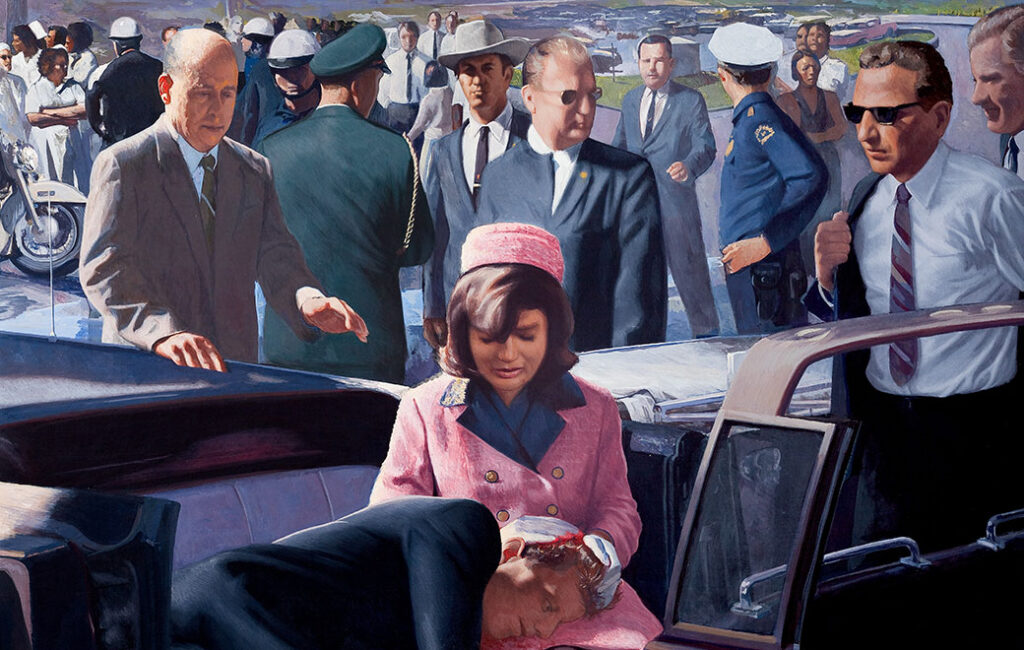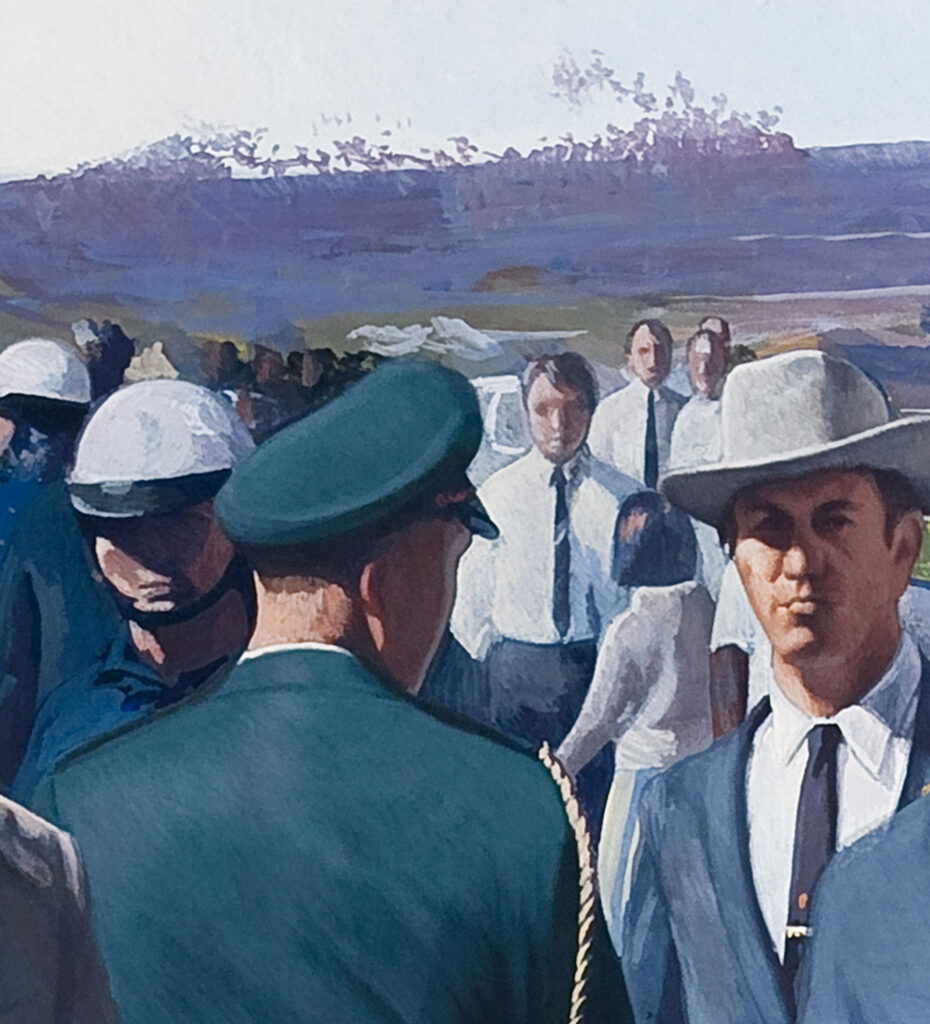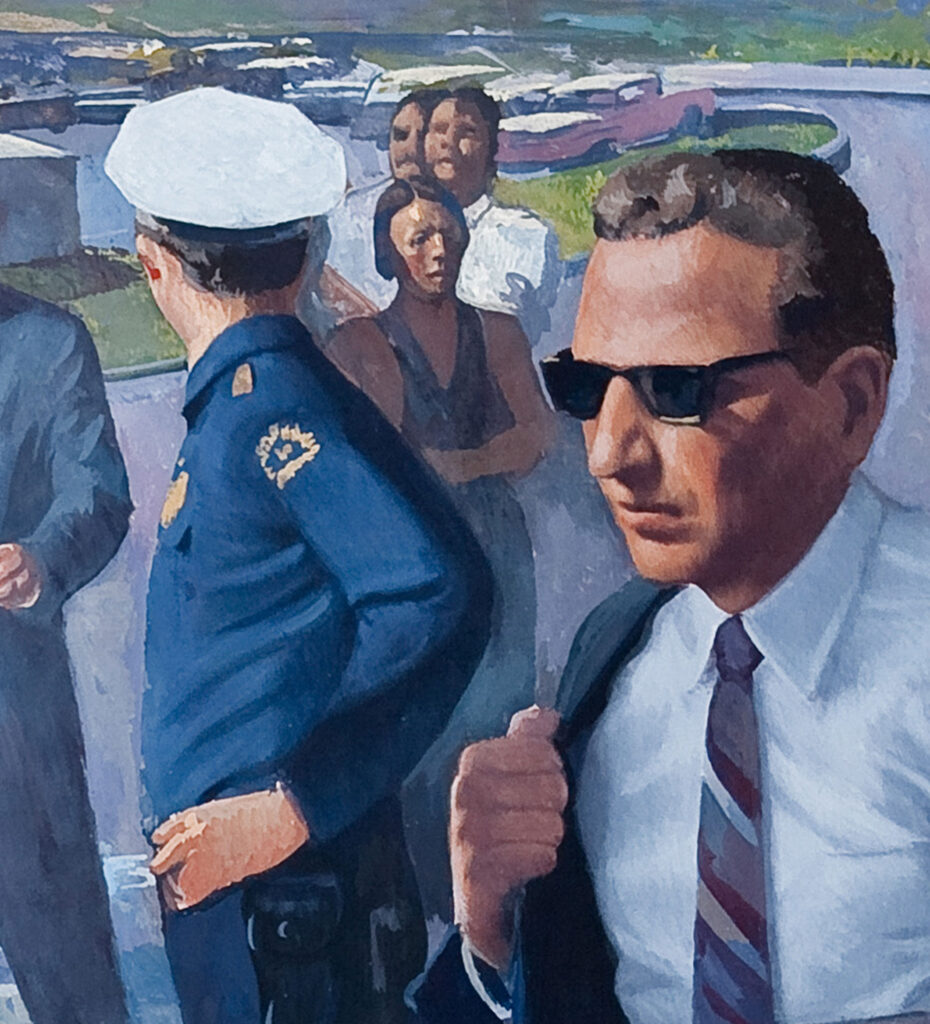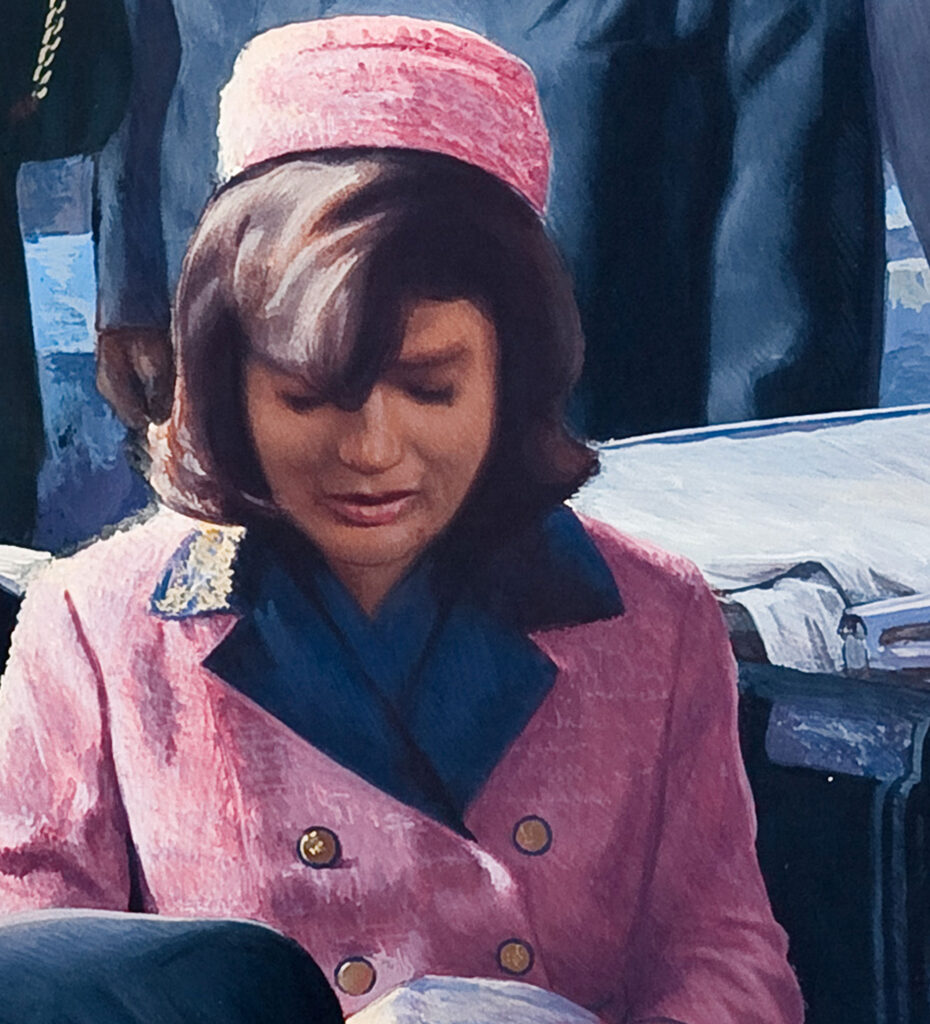
November 22, 1963
Pietá captures a moment at Parkland Hospital witnessed by few and never photographed. In creating this historical painting, the artist shares his interpretation and feelings about this moment.




Pietá
5’ x 7’
Tempera Grassa on Canvas
Mark Balma ©2004
The Pietá (Italian for compassion) painting has been controversial since its creation, and many public museums refused the – work calling it “too emotional”. Balma, recognized for his historical portraits of presidents and world leaders, created the work as a unique vision that was never photographed on that day in Dallas, 1963, as an emotional depiction for future generations. Details of the painting were accurately recreated to give the work historical credibility. The dress, for example, which was specially created by tailor Carlos Chavez from the Oleg Cassini design. The painting took two years to complete and was displayed at the St. Paul Cathedral for one week in 2006. It has been reproduced in art books as an example of contemporary historical painting.
“This historical work just happens to capture a period in our history that is not uplifting but nonetheless important, since in many ways it marked an end of innocence in American life and politics. It is more like Goya’s Third of May painting, or Picasso’s abstract work about the Spanish Civil War, Guernica.”
“History is the memory of a nation. Through art and history we honor and transmit our cultural values. That is reason enough for Balma’s Pietá to become part of our historical artistic heritage,” notes Philip Eliasoph, Ph.D. Professor of Art History, Fairfield University, Connecticut. Based on such similar observations and reactions from those who’ve seen the painting, it’s very possible that when people look back on the art that interpreted the assassination event in 100 years, this will be the piece that they will turn to.
Mark Balma was interviewed by Stephen Fagin, Curator of The Sixth Floor Museum at Dealey Plaza in Dallas, located in the former Texas School Book Depository building at the site of the Kennedy assassination. The Sixth Floor Museum is engaged in an ongoing Oral History Project to capture memories and stories of the life, death, and legacy of President Kennedy, along with the history and culture of the time period. This broad archival initiative, which now includes more than 1,500 recordings, explores the legacy of the assassination, including the many ways that the Kennedys have been interpreted in popular culture – from books, movies, and television programs to art, poetry and music.
In 2004, Mark Balma donated a print of his painting, Pietá, to the museum in Dallas. The original painting is currently held as part of a private collection. This interesting and emotional artwork has had a unique legacy, depicting what transpired directly after President John F. Kennedy was assassinated.